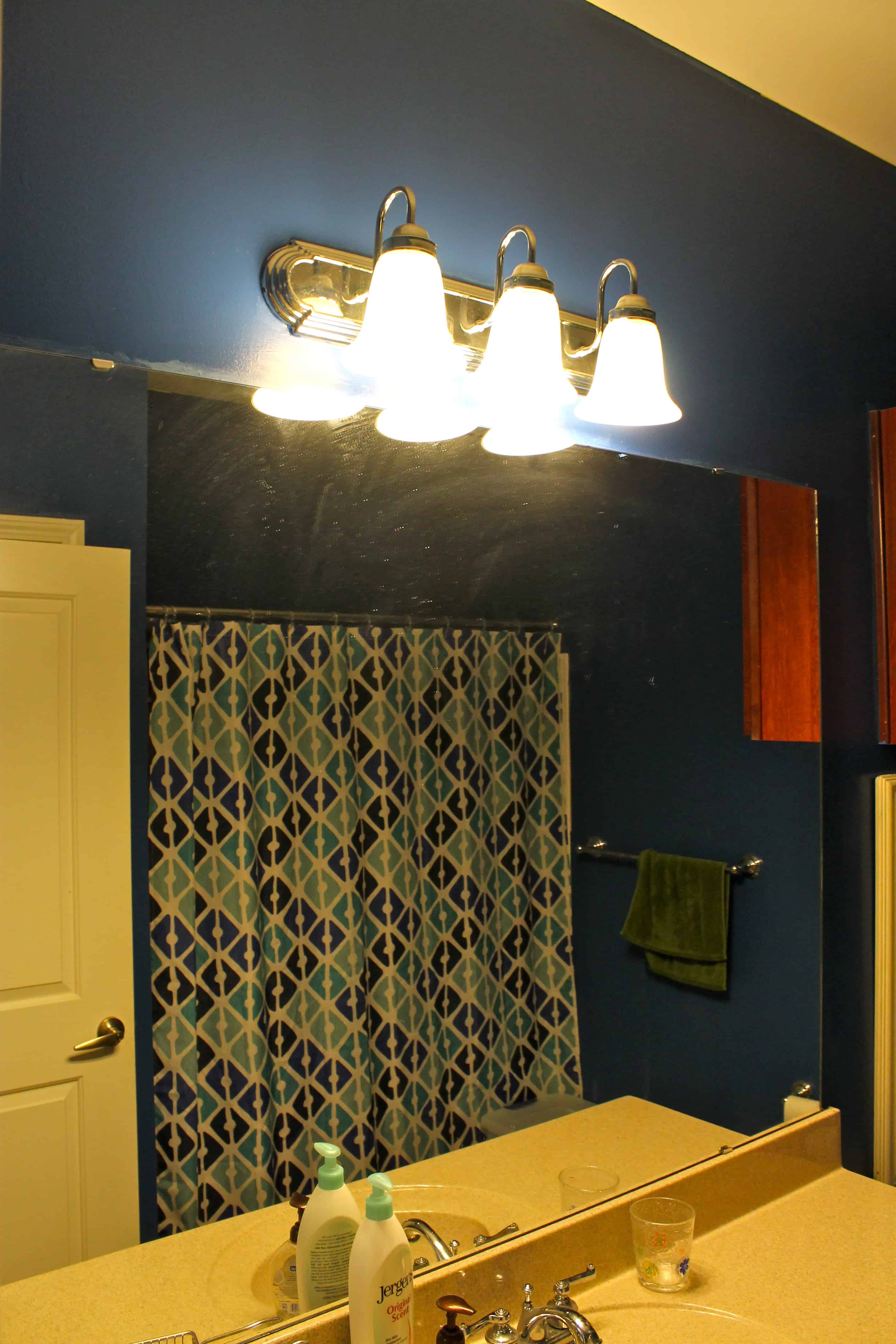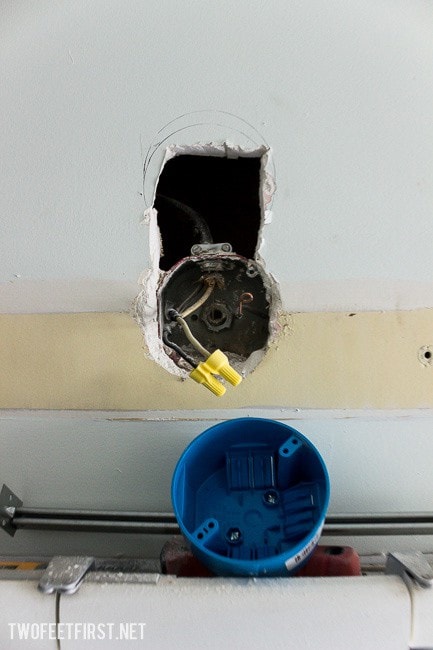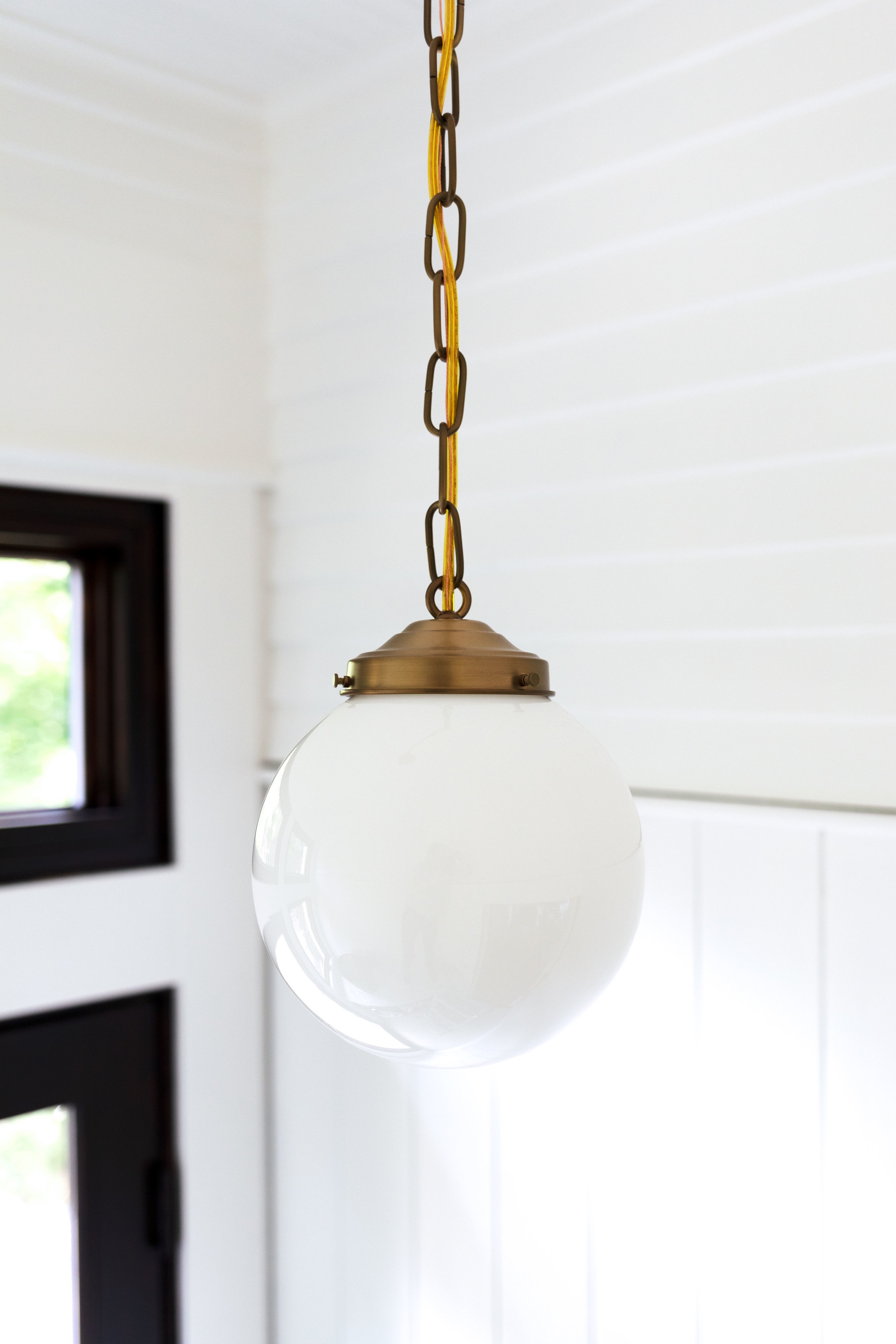Assessing the Existing Bathroom Light Fixture
When it comes to home improvement projects, changing a bathroom light fixture is a relatively simple task that can make a big impact on the overall aesthetic of your bathroom. Before diving into the replacement process, it’s essential to assess the existing bathroom light fixture to ensure a smooth and successful transition. We will guide you through the steps of assessing your current fixture to help you make informed decisions for the replacement.
- Evaluate the Style and Functionality: Take a close look at your existing bathroom light fixture and consider its style and functionality. Determine if it aligns with your desired aesthetic and if it provides adequate lighting for your needs. Assessing these aspects will help you decide whether you want to replace it with a similar style or explore different options that better suit your preferences.
- Check for Compatibility: While considering a replacement, it’s crucial to check the compatibility of the new light fixture with your existing electrical setup. Look for important details such as the voltage requirements, bulb type, and wiring connections. Measure the dimensions of the current fixture to ensure the new one will fit properly in the same location.
- Assess the Condition: Inspect the condition of your current bathroom light fixture. Look for signs of wear and tear, such as rust, cracks, or loose connections. If the fixture is damaged beyond repair, it’s best to replace it entirely. However, if it’s in good condition, you may consider repurposing or refurbishing it to save money and reduce waste.
- Consider Energy Efficiency: In today’s environmentally conscious world, energy efficiency is an important factor to consider. Evaluate the energy efficiency of your existing bathroom light fixture, especially if it’s an older model. Upgrading to a more energy-efficient fixture can not only reduce your environmental footprint but also save you money on your energy bills in the long run.
- Take Note of Additional Requirements: Last, assess any additional requirements you may have for your new bathroom light fixture. For example, if you need adjustable lighting or a fixture with a built-in exhaust fan, make a note of these specifications. This will help you narrow down your options and find the perfect fixture that meets all your needs.

Preparing for the Light Fixture Replacement
Now that you have assessed your existing bathroom light fixture, it’s time to prepare for the replacement process. By following a few simple steps, you can ensure a smooth and successful transition from the old to the new fixture. We will guide you through the necessary preparations to make your light fixture replacement a breeze.
Gather the Tools and Materials: Before you begin, gather all the necessary tools and materials for the light fixture replacement. This may include a screwdriver, wire nuts, electrical tape, a voltage tester, and a ladder or step stool. Having everything on hand will save you time and effort during the installation process.
Turn Off the Power: Safety should always be a top priority when working with electrical fixtures. Locate the circuit breaker that controls the power supply to your bathroom light fixture and turn it off. To be extra cautious, use a voltage tester to ensure the power is indeed off before proceeding with the replacement.
Clear the Area: Clear the area around your existing bathroom light fixture to provide ample workspace. Remove any decorations, towels, or other items that could obstruct your access to the fixture. This will help you work efficiently and minimize the risk of accidents or damage to your belongings.
Protect the Work Area: To protect your bathroom from dust, debris, and potential damage, consider covering the countertop, sink, and floor with a drop cloth or old towels. This will make cleanup easier and prevent any scratches or stains during the replacement process.
Enlist a Helper (Optional): While not necessary, having an extra set of hands can be helpful during the light fixture replacement. Enlist a family member or friend to assist you in holding the fixture, passing tools, or providing additional support. This will ensure a smoother installation and reduce the risk of accidents.
Familiarize Yourself with the Instructions: Before proceeding with the replacement, carefully read the instructions provided with your new bathroom light fixture. Familiarize yourself with the installation steps, wiring requirements, and any specific precautions or recommendations mentioned. Being well-informed will help you tackle the installation with confidence.
Removing the Old Bathroom Light Fixture
Removing the old bathroom light fixture is an essential step in the replacement process. By following the correct procedures, you can ensure a safe and efficient removal without causing damage to your bathroom or the existing wiring. We will guide you through the steps of removing the old bathroom light fixture to prepare for the installation of the new one.
Turn Off the Power: Before you begin removing the old bathroom light fixture, turn off the power supply at the circuit breaker. Use a voltage tester to confirm that the power is indeed off before proceeding. This will prevent any electrical shocks or accidents during the removal process.
Remove the Bulbs and Covers: Start by unscrewing and removing the light bulbs from the fixture. Place them in a safe location to avoid breakage. Next, carefully remove any covers or shades that may be attached to the fixture. Set them aside for cleaning or disposal, depending on their condition.
Disconnect the Wiring: Using a screwdriver, remove the screws that hold the old fixture in place. Gently pull the fixture away from the wall, exposing the wiring connections. Take note of the wiring setup and carefully disconnect each wire from its corresponding connection. Use wire nuts to cap and secure the exposed wires.
Remove the Mounting Bracket: After disconnecting the wiring, you can remove the mounting bracket that holds the fixture to the wall. Unscrew any screws or bolts securing the bracket and remove it carefully. Set it aside for disposal or reuse, depending on its condition.
Inspect the Wiring and Junction Box: With the old fixture removed, take a moment to inspect the wiring and junction box. Look for any signs of damage, loose connections, or frayed wires. If you notice any issues, it’s best to consult a professional electrician to ensure a safe replacement process.
Patch and Paint (if necessary): Depending on the size and location of the previous fixture, you may need to patch and paint the wall to restore its appearance. Fill any holes or gaps with spackling compound, and once it dries, sand the area smooth. Finally, apply a coat of paint that matches the surrounding wall color to complete the transformation.
Installing the New Bathroom Light Fixture
Now that you have successfully removed the old bathroom light fixture, it’s time to install the new one. Proper installation is crucial to ensure the functionality and safety of the fixture. We will guide you through the steps of installing the new bathroom light fixture, allowing you to enjoy a fresh and updated look in your bathroom.
Read the Instructions: Before you start installing the new bathroom light fixture, carefully read the manufacturer’s instructions. Familiarize yourself with the installation steps, wiring requirements, and any specific precautions or recommendations mentioned. This will ensure a smooth and successful installation process.
Attach the Mounting Bracket: Begin by attaching the new mounting bracket to the junction box on the wall. Use the provided screws or bolts to secure it in place. Ensure that the bracket is level and securely fastened to provide a stable base for the fixture.
Connect the Wiring: Now it’s time to connect the wiring of the new bathroom light fixture. Match the color-coded wires from the fixture to the corresponding wires in the junction box. Twist the exposed ends of the wires together and secure them with wire nuts. Make sure all connections are tight and secure.
Secure the Fixture: Once the wiring is connected, carefully position the new bathroom light fixture over the mounting bracket. Align the screw holes on the fixture with the holes on the bracket. Insert the provided screws and tighten them until the fixture is securely attached to the wall.
Install the Light Bulbs and Covers: After securing the fixture, install the light bulbs according to the specifications provided by the manufacturer. Make sure they are properly screwed in and secure. Attach any covers or shades that come with the fixture, following the instructions provided.
Turn On the Power and Test: Before considering the installation complete, turn the power back on at the circuit breaker. Test the new bathroom light fixture to ensure it functions properly. Check for any flickering, dimming, or other issues. If everything is working as expected, congratulations! You have successfully installed your new bathroom light fixture.
Finishing Touches and Safety Considerations
With the new bathroom light fixture installed, it’s time to add the finishing touches and consider important safety measures. These final steps will not only enhance the overall appearance of your bathroom but also ensure the longevity and safety of your new fixture. We will guide you through the finishing touches and safety considerations to complete your bathroom light fixture replacement.
Clean the Fixture and Surrounding Area: Take a moment to clean the new bathroom light fixture and the surrounding area. Wipe off any dust, fingerprints, or smudges on the fixture using a soft cloth or a gentle cleaning solution. Clean the walls, switches, and nearby surfaces to give your bathroom a fresh and polished look.
Adjust the Lighting: Once the fixture is clean, adjust the lighting to match your preferences. If your new fixture allows for adjustable lighting, experiment with different brightness levels to create the desired ambiance in your bathroom. This will help you achieve the perfect lighting for various activities such as applying makeup, shaving, or relaxing in the bathtub.
Consider Energy-Saving Measures: To maximize energy efficiency, consider installing LED bulbs in your new bathroom light fixture. LED bulbs are long-lasting, consume less energy, and emit less heat compared to traditional incandescent bulbs. By making this simple switch, you can reduce your energy consumption and contribute to a more sustainable environment.
Regular Maintenance: To ensure the longevity of your new bathroom light fixture, it’s important to establish a regular maintenance routine. This will help keep the fixture in optimal condition and prevent any potential issues. Here are a few maintenance tips to consider:
- Regularly dust and clean the fixture to remove any dirt or grime that may accumulate over time. Use a soft cloth or a gentle cleaning solution to avoid scratching or damaging the fixture.
- Check the bulbs periodically to ensure they are functioning properly. Replace any burnt-out bulbs promptly to maintain consistent lighting in your bathroom.
- Inspect the wiring connections and junction box annually to ensure they are secure and free from any signs of damage or deterioration. If you notice any issues, it’s best to consult a professional electrician to address the problem.
- Consider scheduling a professional inspection of your bathroom light fixture every few years. This will allow an expert to evaluate the fixture’s condition, wiring, and overall safety.
Safety Considerations: When working with electrical fixtures, safety should always be a top priority. Here are a few important safety considerations to keep in mind during the bathroom light fixture replacement process:
- Always turn off the power supply at the circuit breaker before starting any work on the electrical system. Use a voltage tester to confirm that the power is indeed off before proceeding.
- Wear appropriate safety gear, such as safety glasses or goggles, to protect your eyes from any potential debris or accidents.
- Use the correct tools and follow the manufacturer’s instructions carefully. Improper tools or techniques can lead to accidents or damage to the fixture.
- If you are unsure about any aspect of the installation process, or if you have limited experience with electrical work, it’s best to consult a professional electrician. They have the knowledge and expertise to handle the job safely and efficiently.
- Avoid overloading the circuit by using the appropriate wattage of light bulbs for your fixture. Excessive wattage can cause overheating and potentially lead to electrical issues or even fire hazards.
- If you encounter any unexpected issues or complications during the installation process, do not hesitate to seek professional assistance. It’s better to be safe than to risk causing damage or injury.
By following these safety considerations and taking the necessary precautions, you can ensure a smooth and safe bathroom light fixture replacement process.
How to Move Off Center Vanity Light Over on Bathroom Wall
How to Move Wall Light
How to Move Wall Light
How to Move Vanity Light Outlet Fixture Junction Box Over on the Wall Vanity lighting, Bathroom light fixtures, Light fixtures bathroom vanity
Moving a light in the powder room — how hard is this really?
How To Move A Ceiling Light To Center It Young House Love
Moving a bathroom light fixture higher – what to do about the old
Fix Loose Bathroom Vanity Light Fixture – HomeDIYGeek
How to Center An Off-Center Ceiling Light (Without Moving the
Related Posts:
- Bathroom Light Fixtures Denver
- Black Wrought Iron Bathroom Lighting
- Bathroom Lighting Above Vanity
- How To Remove Bathroom Light Bar
- Best Bathroom Light Fan Combo
- Canadian Tire Bathroom Lighting
- Country Bathroom Lighting Ideas
- Bathroom Lighting Inspiration
- Nutone Bathroom Light Cover Replacement
- Modern Bathroom Lights Over Mirror












